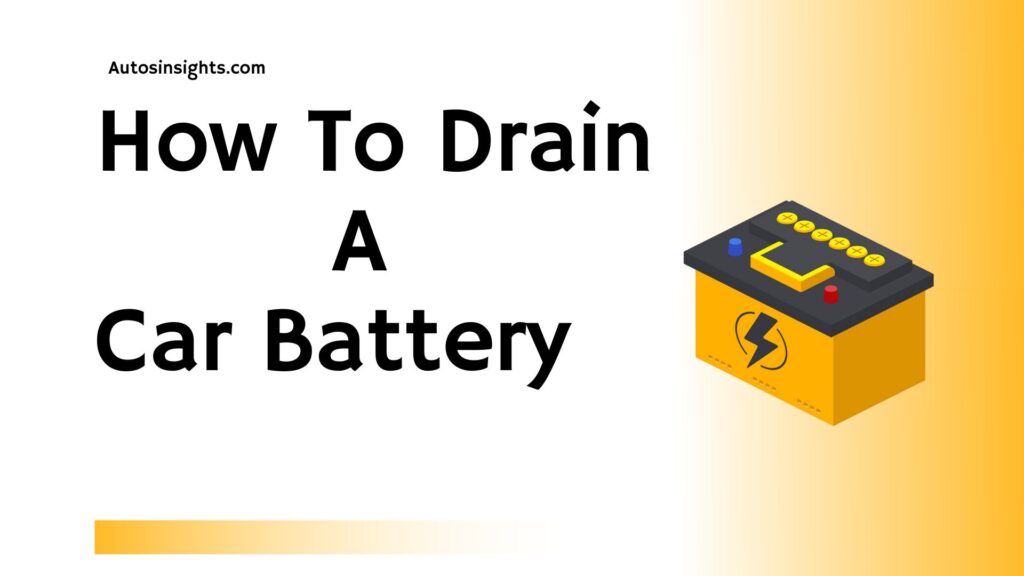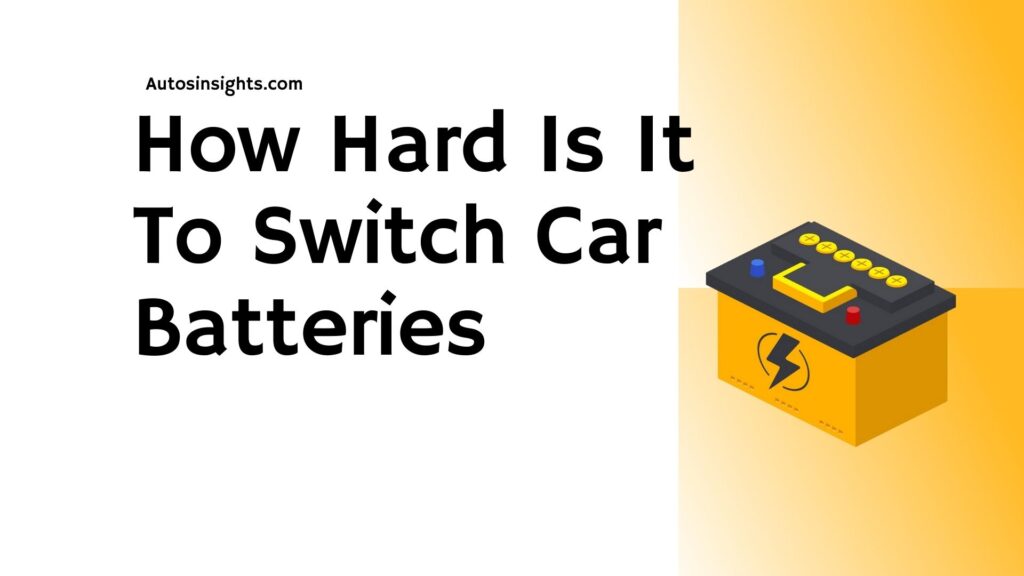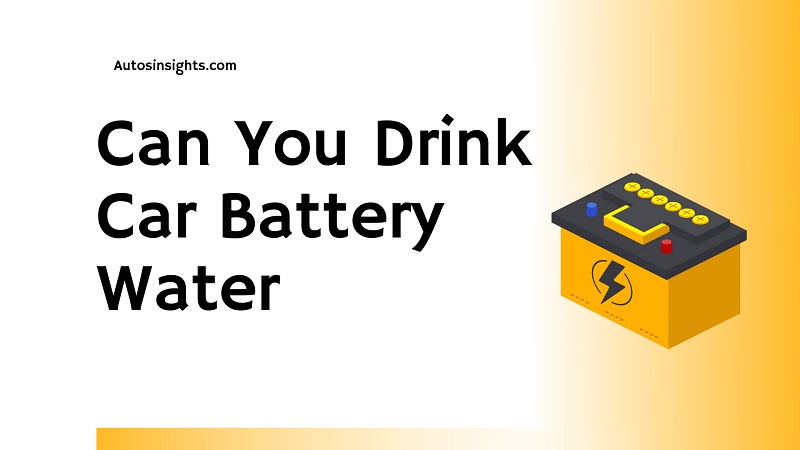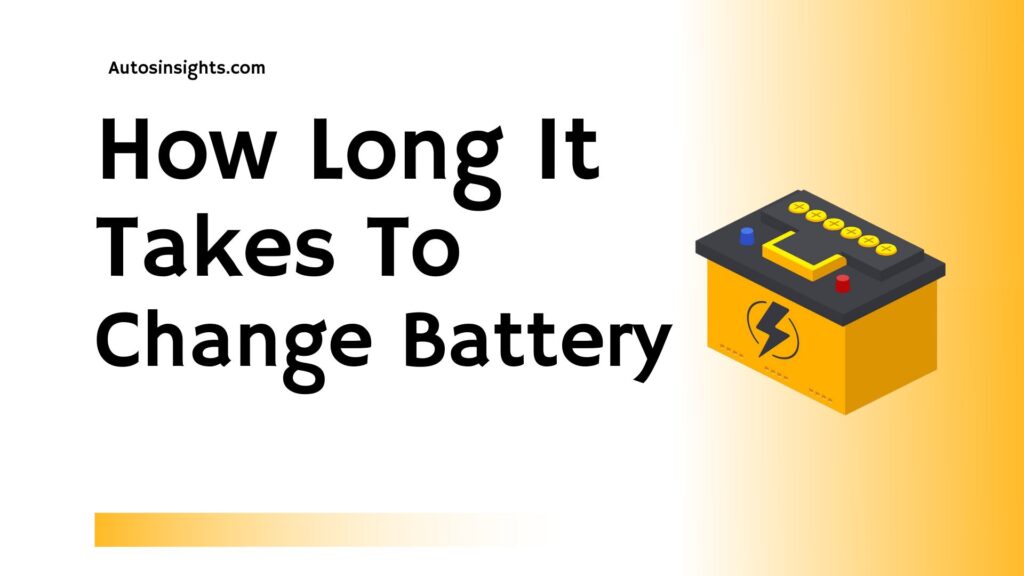You can drain your car battery by turning on your car headlights when your car engine is off. It will drain your car battery fastly.
There are many other ways to drain your car battery, but the fastest way is that I have told you.
And in a bonus tip, I also tell you how to charge your car battery while driving.
What can drain a car battery when the car is off
A car battery can drain when the car is off due to several factors, including interior lights that are left on, door lights that are not turned off, bad relays, bad installation, parasitic drain, power loss, faulty wiring, and even a defective alternator.
All these elements can cause a battery to discharge, even when the car is not being used.
It is crucial to make sure that all lights are turned off before leaving the car and to find any issues related to bad relays, poor installation, parasitic drain, power loss, and faulty wiring as soon as possible to avoid the risk of a dead battery.
In case of a defective alternator, it’s best to get the alternator inspected by a professional mechanic.
Here are some other issues or factors that cause your car battery drain.

Principle of car battery functioning:
The 12 volts lead car battery; this heavy battery is used in almost every combustion engine vehicle or any vehicle having electrical systems on the planet Earth.
Inside the lead acid car batteries, lead plates dipped in the lead cause chemical reactions and result in current and voltage. In other words, batteries store the energy in the form of chemical energy converted into electrical when needed.
The battery drains concept emerges from the fact that car batteries are chargeable by providing the electrical current that reverses the chemical reaction processes. Such batteries provide a large amount of voltage compared to other home-based alkaline batteries.
Factors of Car Battery drains:
Human error :
Human error can be the cause of draining your car battery terminals. You come home from work. If you are tired of your daily work and unconscious, you need to remember to turn off the car’s headlights or any interior lights to turn off or don’t completely turn off the trunk.
The battery drains overnight, and your car won’t start in the morning. The biggest thing that can quickly drain your battery is forgetting to turn off your headlights. Additionally, remaining the door open is another factor in causing your battery to drain.
While these lights run overnight, your car battery drains with nothing to recharge; that’s why the car won’t turn over in the morning. A headlight or a dim dome headlight can die battery overnight, so turn them off.
In some new cars with modified technology, there are some sensors for lights, and even some have an alarm system to inform you that your lights or doors are open. If you dont have such, be vigilant against such conditions and errors.
Parasitic battery drain:
A parasitic drain occurs when the vehicle continues to run or to work properly even after you turn off the car. Some parasitic drain is normal, and your battery continues to deliver energy to keep different things like your clock, radio presets, and security alarm operational all the time or car alarm. However, when an error occurs, the parasitic drain exceeds normal.
These parasitic draws occur due to faulty wires or defective fuses and poor installation. Some of the causes to drain the battery due to the parasitic drain are faulty door light switch, faulty lock actuator trunk lock switch, faulty car stereo or the car or any wiring diagram of it or any part related to the electrical system that is inserted incorrectly.
You can avoid draining your car battery by ensuring your trunk glove box and doors are fully closed and latched before leaving the car.
Loose battery cables or corroded connections:
The car’s battery has cables; one is a positive cable, and the other is a negative one. These cables are connected to the battery terminals. These connections may get loose over time, and or battery cables can become corroded, which causes the battery power to decrease because that battery can properly provide the engine’s ability for its initial combustion.
You can even stall while driving or damage the electrical system or components. Corroded battery terminals can prevent the charging system from topping your battery while going. Loose cables can prevent the battery charger from charging properly as it works as an obstacle to providing the efficient current to reverse the chemical reaction in the battery’s acid.
YOu can solve car battery drain problems related to corrosion by regularly cleaning the battery’s terminals. Without regular maintenance, the cables become loose, or the metal terminals become corroded, causing difficulty for the current to get in and out of the battery. It’s compulsory to check the battery terminal regularly, so it hasn’t become dirty or disconnected, preventing it from charging while your car is in use or leaving that in low reserves.
EXTREMELY HOT OR COLD TEMPERATURE
Batteries don’t handle very cold or very hot temperatures well. Extreme temperatures can cause lead sulfate crystals to build up. If the car is left in such conditions for too long, the sulfate buildup can damage the battery life. It may also take a long time for your battery to charge in these environments, especially if you drive short distances.
Extreme temperatures can also slow the battery’s charge, lowering stored energy. Lead sulfate crystal that is built up makes the battery difficult to charge completely. Extreme temperatures can also highlight the underlying issues. Manufacturers designed different batteries that can bear extreme cold and hot temperatures that prevent the battery dies too and a shorter battery life increases.
New batteries have more capability to bear compared to an old car battery with poor performance. Most car batteries that are old become weak and cause a change in their performance.
POOR CHARGING WHILE YOU DRIVE.
Your car relies on a battery when you fire up the engine, but your battery relies on an alternator recharges to keep it charged while driving. If you have a defective alternator, it doesn’t charge your battery even if you are driving your car.
A defective charging system leads to a dead battery. A drained car battery is done quickly if something called the alternator on your charging system fails to push out enough voltage, ideally between 13.5 to 14.8 volts. In this case, the battery will continue to drain while the car runs. If the charging system isn’t working, your battery isn’t receiving an extra boost of charge when you drive, which drains its resources faster. Even if you swap out the battery or perform jumpstarts, you’ll end up with an empty cell. In this case, you’ll need a mechanic to look into the issue and make the appropriate repairs.
Defective Alternator
The alternator is responsible for charging the battery. It also helps power the electrical systems in the car. When the alternator goes bad, the battery cannot recharge. The alternator that is not a so-called faulty alternator can last for about seven years and about one thousand or one thousand and a half miles. Similar to the charging system, your old battery can also have different problems if your battery has a bad diode. The bad diode alternator recharges your car and draws power even if the engine is shut off and can cause a short circuit. When the car owners in the next morning start the vehicle, it won’t.
When this happens, the extra diode takes on most of the strain, which will cause drawing power. You would not be bound to change the electrical device’s whole alternator to resolve this issue. Still, you can only change the diode that is more cost-effective besides the regular checking of the alternator.
TAKING TOO MANY SHORT DRIVES:
The alternator needs time to charge the battery. You must allow the alternator to work if you only drive down the street to visit the local grocery store. In the long run, frequent short drives can shorten your car battery’s lifespan. Ideally, you want to take long drives, preferably on the highway, for a full charge to occur. In the short run, frequent fast movements can reduce the life span of a vehicle. Your battery may run out if you take too many short drives.
Old and dead battery:
Nothing lasts forever, not even your vehicle battery. In most cases, your vehicle battery lasts for about a year; it varies according to the owner’s manual routine of how and where the vehicle is driven. If your battery is not new or weak, it will not hold a full charge well. The battery may wear out if your car consistently won’t start. The car battery can last between three and five years in normal conditions, but it will be worn out if you continue drawing power.
Electrical Issues:
Electrical problems that draw a large amount of current can lead to a dead battery that usually includes faulty wiring. Check if electrical loads have shorted wirings that can draw excessive current when powered. Sometimes, a wiring error can keep some features running with a large current draw than they should. Bad starter motors draw a large amount of current, depleting the battery. Electrical issues constantly demanding more power than the alternator can provide will lead to a dead battery. Jumper cables and car alarms can be one of the reasons for this besides parasitic draw. Sometimes the automatic windows system has a fault that results in a faulty battery check.
Poorly Maintained car batteries :
Failure to keep up with regular battery maintenance can strain it, which means it will drain faster through everyday use. Dirty and wet battery surfaces may cause battery charge leakage. The wrong electrolyte level can also lead to underperforming batteries. Even small drains on the surface of the battery may kill a very weak battery. So always make sure the battery surface is dry and clean. If your vehicle has a battery marked with LOWER and UPPER on its side, you can check the electrolyte level, which should ideally be between the LOWER and UPPER marks.
Conclusion:
There are a few reasons why your car battery is a drain. These factors, including the parasitic draw, faulty plastic clamps, fuse puller in the battery, and even poor battery connections, can cause your battery to die. To overcome we use different techniques, and sometimes we can use jumper cables, which helps a lot in resolving this issue. So this is how your car battery is drained in different conditions and how you must overcome it.
Frequently Asked Questions:
Can you completely drain your car battery?
A car battery is designed as a power antenna that provides power to the car’s combustion engine or any electrical system to initiate. Additionally, they are intended to do a lot of functions. It is compulsory to check the car battery or other factors regularly; otherwise, it causes the battery to drain and drive the car’s system to stop.
How quickly can you drain a car battery?
A vehicle’s battery can drain by constant use. The charger can charge a car battery that can power the engine. A fully charged battery becomes drained in about two months or three if your regular inspection is absent and your weekly average of that vehicle is 30 kilometers.
What drains a car battery overnight?
Here are various factors that can cause the battery to drain overnight. If your car alternator is not working correctly or you have a damaged alternator, or even if your car is off, the internal lights head led lights use the battery power for functioning. If, unlike most drivers, someone somehow forgets to close the door properly, that will affect the battery power.
How do I drain my battery slowly?
If you want your battery to drain slowly, you should keep in mind the following steps:
- Turn off headlights
- Turn off interior lights
- Close the door properly
- Turn off flickering lights
Is draining a car battery harmful?
The drain battery is harmful to the car working properly. If the battery drain, the vehicle will not be able to function properly and will not start. If you drop significantly over the ground or somewhere else, the acid that causes the chemical reactions to proceed can leak into water or on the floor, causing air, soil, or water pollution.
Related Articles:
- Can You Touch Positive Terminal Of Car Battery
- What Happens When You Shake A Car Battery
- Is 13 Volts Good For A Car Battery
- How Long Does It Take To Change A Car Battery
- Does Driving Charge Your Car battery
- Car Battery Doesn’t Fit In A Tray
- How To Drain Car Battery
- Car Battery Dies After Getting Gas
- Can A Bad Battery Cause Low Voltage





